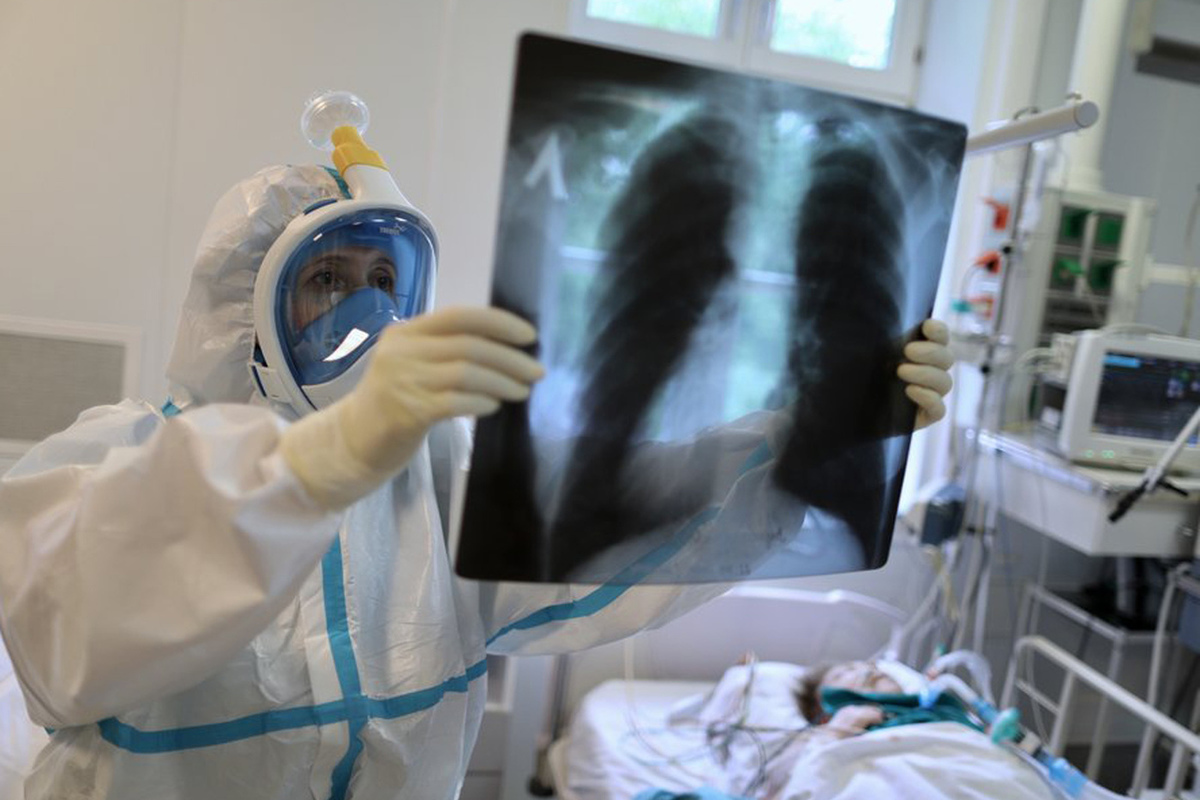“It’s so tight that it’s hard to talk”: Russians complained about new manifestations of coronavirus
[ad_1]

“At first there was some kind of ARVI, then everything was getting better, and suddenly everything started all over again”
Coronavirus continues to bring surprises. Doctors are faced with new manifestations of the disease: more and more often there are patients who have a high temperature for the first days, then it subsides for several days, but begins to rise with renewed vigor, already accompanied by a severe cough. “MK” learned from experts what strain of SARS-CoV-2 is currently spreading across the country and what it threatens.
In patient groups online, people willingly share with each other how the new illness is progressing. “For the first three days the temperature was 39-39.7, vomiting, aching bones in the pelvis and legs, hellish headache, runny nose, tachycardia. On the 2-3 day, aching pain in the back appeared, with lumbago. Then the temperature dropped, but the whole day I felt dizzy, as if my brain was being squeezed in a vice. The weakness is the strongest. And after a couple of days – again fever and cough. The test on the first day showed coronavirus,” says one of the infected.
“It all started for me on March 11 – with body aches, a temperature of 38, my neck muscles and head hurt badly. The next day everything continued, a very strong pain in the throat was added, it was difficult to swallow, and the voice was hoarse. I took a test for corona, the result is positive. Then the temperature went away, and a day later it jumped up again, a severe sore throat remained, and even coughing in fits and starts,” says 39-year-old Ilya.
“At first I had some kind of acute respiratory viral infection, then everything gradually improved, and suddenly everything started all over again. According to the tests, it’s Covid again, probably for the fifth time in a row. With constant fever, weakness, coldness in the extremities. And after 10 days I felt a feeling of tightness in my chest after walking or other exercise. It presses so hard that it’s difficult to speak, after resting in bed it lets go a little, but this unpleasant feeling has been constant for more than a week. And there’s trouble with the pulse: when walking, it’s 130. After walking, a strong loss of strength appears and puts you to sleep,” Maxim writes online.
…According to Rospotrebnadzor, in the 11th week of 2024 in Russia, the incidence rate of influenza and ARVI increased by 8.9% compared to the previous week. An excess of the Russian average incidence rate was registered in 49 regions, including Moscow and the Moscow region. At the end of the 11th week of 2024, more than 24 thousand cases of COVID-19 were registered in the country, which is 5% higher than last week. The Omicron genovariant remains predominant.
Meanwhile, experts write that the JN.1 variant is now ruling the roost in Russia – this is one of the varieties of “Piroda” generated by the original “Omicron”. N.1 has an important additional mutation in the spike protein and three other changes in other proteins, making it mega-infectious and better able to evade immunity. According to some reports, it affects the lungs much more often than its predecessors. The risk group traditionally includes people over 60 years of age, patients with chronic diseases, and smokers.
According to American geneticist Dmitry Prus, after a month and a half break, the St. Petersburg Influenza Institute immediately posted 653 coronavirus genomes from St. Petersburg and the surrounding area, dating back to January and the first half of February. Almost 90% of them are “Jenny” (the same JN.1 – Author). In January, its share was still 70-80%; in February it rose above 90%. Among these genomes, a small but gradually growing role was played by mutants – products of the convergent evolution of the virus, especially JN.1.18 with the “fashionable” mutation R346T, which was first discovered in St. Petersburg only on January 17, and by mid-February already every tenth Jenny had “”.
The proportion of JN.1.18 (with the R346T mutation) is also growing in New York, but is not yet reflected in a sharp increase in hospitalizations and outpatient visits. “The convergent evolution of coronavirus is gaining momentum, but the incidence continues to decline? – Dmitry Prus cautiously suggests. – In New York, new hospitalizations have already fallen to the level of the lull of last summer, and continue to fall. There are gradually more mutations from the “fashionable set”, but this dynamics is too slow to threaten an increase in incidence. In Israel, the proportion of “convergent” strains is even smaller. However, it must be said that at this stage of the evolution of the virus, strains that have already acquired one of the “fashionable mutations” do not stop and continue to add more. Having thus gone through several circles along the paths of convergent evolution, they perhaps acquire better potential. According to limited data from Singapore, these double-mutated descendants of JN.1 have grown rapidly. We’ll watch.”
The expert adds that recently, although Covid has retreated, it has not disappeared, but has stabilized at a low level, as a predominantly childhood infection, according to recently published British data. On the new low plateau, the proportion of simultaneously infected people is 0.7% of the population, and approximately one person in a thousand falls ill every day. But this likelihood is almost five times higher in children than in older people. “That is, at this level of Covid spread, children become infected on average once every 2-3 years, and older people less often than once every 10 years. Despite the reduced prevalence of covid, it does not disappear, that is, niches or segments of the population remain in which the virus is still effectively transmitted,” says the geneticist.
[ad_2]
Source link








